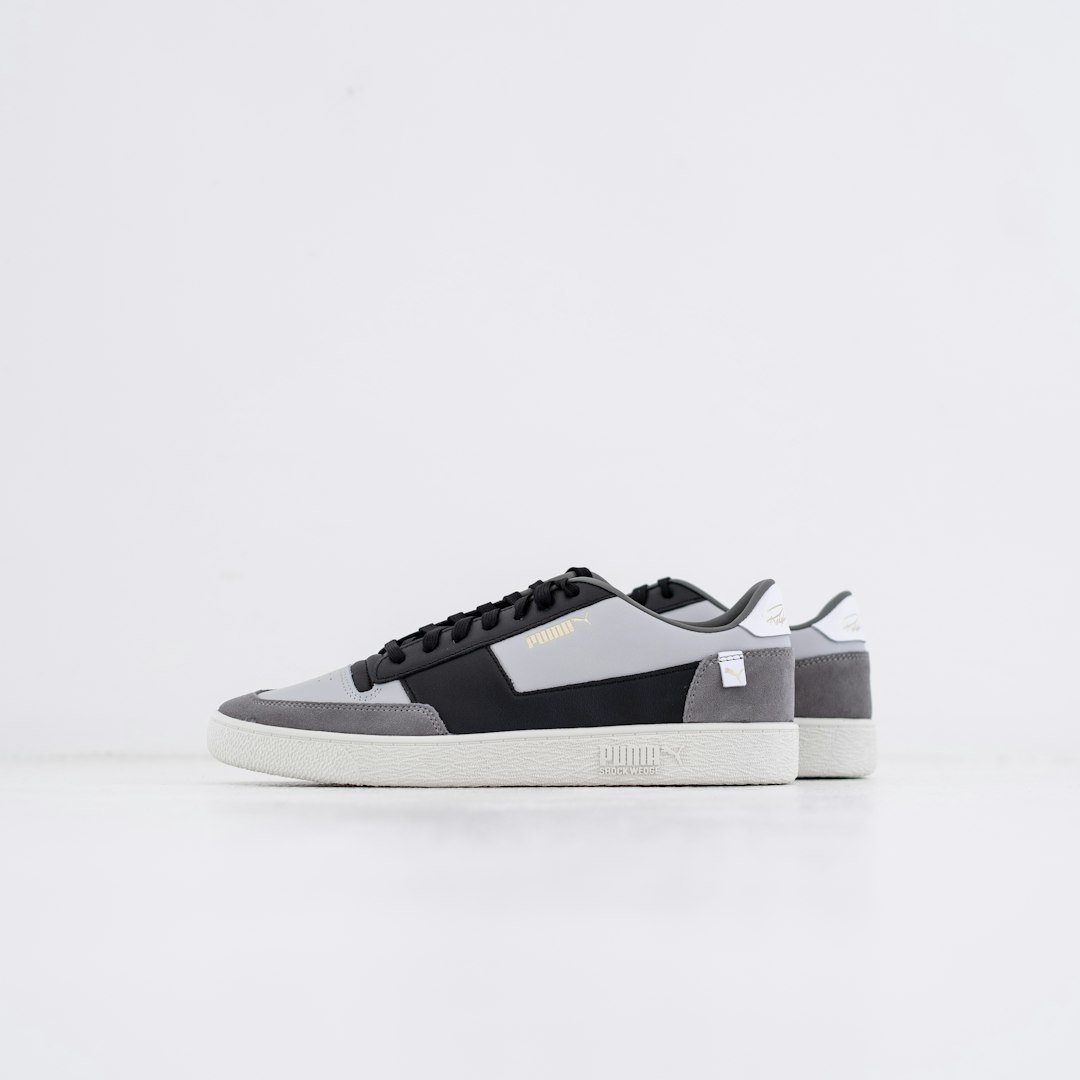
The Escalating Crisis of Ocean Plastic
The issue of plastic pollution in our oceans has emerged as a critical environmental challenge in contemporary society. Vast expanses of ocean are now choked with millions of tons of plastic waste, posing significant threats not only to marine species but also to entire marine ecosystems. As larger pieces of plastic degrade into microplastics, they infiltrate the food chain, endangering both aquatic life and human health. Alarmingly, projections suggest that by 2050, the weight of plastic in the oceans could surpass that of fish.
Yet amidst this grim scenario, there is a glimmer of optimism. Innovators are repurposing ocean waste into sustainable products, with ocean plastic sneakers standing out as a remarkable solution. These sneakers are crafted from reclaimed plastic sourced directly from our seas, presenting a creative way to tackle a pressing issue.
The Significance of Ocean Plastic
Plastic pollution isn’t merely an eyesore; it poses grave risks to marine biodiversity. Creatures such as turtles, seabirds, and marine mammals frequently confuse plastic debris for food, which can lead to lethal outcomes. Microplastics, the minuscule remnants of larger plastic items, permeate the marine food web, moving from plankton to fish and eventually to humans.
Why should this concern you? The accumulation of plastic in our oceans results in profound environmental damage. Tackling this issue not only protects marine wildlife but also preserves our planet’s natural resources for the generations to come.
The Extent of Ocean Plastic Pollution
The prevalence of plastic waste is staggering. The United Nations reports that over 8 million tons of plastic are dumped into the oceans annually, equivalent to a garbage truck’s worth of plastic every minute. Many plastic items take centuries to decompose, and they never completely vanish; instead, they fragment into smaller pieces, wreaking havoc on marine life on a grand scale.
What Exactly Are Ocean Plastic Sneakers?
Ocean plastic sneakers represent footwear crafted from plastic waste retrieved from the marine environment. Designed to embody both sustainability and aesthetic appeal, these sneakers utilize advanced recycling techniques to transform ocean plastics into fibers suitable for constructing sneaker uppers, soles, and other components.
The principle is straightforward: salvage the plastic polluting our oceans, clean it up, and repurpose it into valuable products. The outcome is sneakers that not only look appealing but also contribute to alleviating the detrimental effects of plastic waste.
The Production Journey
Creating ocean plastic sneakers involves multiple stages. Initially, plastic debris is collected from the seas, typically consisting of abandoned fishing nets, plastic bottles, and miscellaneous refuse. This plastic is then cleaned, processed, and shaped into small pellets or fibers, which are further woven into fabric or molded into sneaker soles.
Partnerships with Environmental Groups
Numerous brands have forged alliances with environmental organizations to enhance the collection and recycling of ocean plastics. A notable example is Adidas, which collaborates with Parley for the Oceans, an organization dedicated to curbing ocean plastic pollution. Through this partnership, Adidas has successfully produced footwear that is not only environmentally responsible but also exemplifies how large corporations can contribute positively to this global issue.
The Environmental Benefits
By transforming ocean plastic into sneakers, brands are providing a practical solution to a significant ecological problem. This recycling initiative not only aids in cleaning our oceans but also minimizes the reliance on virgin materials needed for manufacturing.
Minimizing Plastic Waste
The creation of ocean plastic sneakers actively diminishes the volume of waste that would otherwise accumulate in landfills or enter the ocean. By reclaiming discarded plastics, manufacturers are not only protecting marine ecosystems but also giving new life to these materials.
The Benefits of Recycled Materials
Utilizing ocean plastic in sneaker production helps lessen the demand for non-renewable materials such as petroleum, which is typically used to create conventional plastics. Consequently, this results in a reduced carbon footprint when compared to the manufacturing of standard footwear. The environmental advantages are evident: less waste, decreased resource extraction, and an increase in eco-friendly products.
Where Fashion Meets Purpose
Ocean plastic sneakers embody a fusion of sustainability and style. Brands have dedicated considerable effort to ensure these sneakers are not only environmentally friendly but also fashionable. With sleek designs and vibrant color options, they represent a perfect harmony of ecological responsibility and contemporary fashion.
Trendy Designs on the Rise
A growing number of sneaker brands are embracing ocean plastic materials, leading to an expansion of trendy choices for eco-conscious shoppers. From minimalist silhouettes to striking, bold patterns, these sneakers have evolved beyond mere functionality to become symbols of environmental awareness.
Stylish and Eco-conscious
The allure of ocean plastic sneakers lies in their ability to marry style with sustainability. They deliver the same level of comfort and design as conventional sneakers while contributing to the fight against ocean plastic pollution. Consumers can literally showcase their commitment to sustainability with every step they take.
Leading Brands in the Movement
Several prominent sneaker brands have made significant progress in integrating ocean plastic into their offerings. Adidas stands out as a pioneer in this domain, having developed an extensive range of sneakers made from ocean plastics. Other brands, including Nike, Puma, and Reebok, are also launching eco-friendly sneaker collections that feature ocean plastic or recycled materials.
Adidas and Parley for the Oceans
In partnership with Parley for the Oceans, Adidas has introduced sneakers that not only aim to clean up our oceans but also raise awareness about the crisis of ocean plastic pollution. The company has pledged to incorporate ocean plastic into more of its products, and its initiatives have received positive responses from consumers. The Ultraboost Parley sneakers exemplify the successful blend of innovation and sustainability, resulting in functional yet stylish footwear.
Other Influential Brands
Beyond Adidas, brands such as Allbirds and Veja are making strides towards sustainability by integrating recycled ocean plastics into their footwear collections. These companies are crafting fashionable sneakers that resonate with consumers eager to effect change, demonstrating that eco-friendly products can be both attractive and responsible.
Consumer Trends and Reactions
As public consciousness surrounding environmental issues heightens, so does the appetite for sustainable products. Ocean plastic sneakers have gained significant market traction, as more consumers gravitate towards eco-friendly options. The increasing interest in ethical fashion is prompting brands to embrace sustainable practices, with ocean plastic sneakers epitomizing this movement.
The Surge in Demand for Sustainable Products
Shoppers are increasingly aware of the environmental ramifications of their purchases. Consequently, brands that provide sustainable alternatives, such as ocean plastic sneakers, are experiencing heightened customer loyalty. This trend is anticipated to persist as consumers seek ways to minimize their ecological footprint and support ethical enterprises.
The Prospects for Ocean Plastic Sneakers
The outlook for ocean plastic sneakers is promising. As technological advancements continue and more sustainable methods are embraced, we can expect innovative approaches to incorporate ocean plastic into footwear and other products. The movement towards using recycled materials in eco-friendly sneakers is likely to expand, leading to new collaborations and product launches regularly.
Final Thoughts
Ocean plastic sneakers illustrate the powerful synergy between innovation and environmental stewardship. By converting ocean waste into fashionable footwear, brands are actively contributing to the reduction of pollution that endangers our oceans and marine life. As consumer awareness grows, the demand for these sneakers is poised to rise, heralding a future where fashion and sustainability thrive side by side.
FAQs
- What materials are used to make ocean plastic sneakers?
Ocean plastic sneakers are constructed from plastic debris retrieved from the ocean, including items like fishing nets, bottles, and other waste. This plastic is thoroughly cleaned, processed, and transformed into usable sneaker materials. - How do these sneakers benefit the environment?
By utilizing recycled ocean plastic, these sneakers help to reduce ocean waste and lessen the demand for non-renewable resources. This contributes to a smaller carbon footprint compared to conventional footwear production. - Are ocean plastic sneakers durable?
Absolutely! Ocean plastic sneakers are crafted from high-quality materials designed to provide durability and comfort comparable to traditional sneakers. Many brands prioritize performance in their eco-friendly footwear. - Can these sneakers be recycled?
Yes, several ocean plastic sneakers are designed for recyclability, promoting a circular economy. This allows them to be repurposed at the end of their life cycle, further minimizing their environmental footprint. - Which brands are at the forefront of ocean plastic sneaker production?
Leading brands in ocean plastic sneaker production include Adidas, Nike, Allbirds, and Veja. These companies are pioneering eco-friendly footwear lines that raise awareness of ocean plastic pollution.


